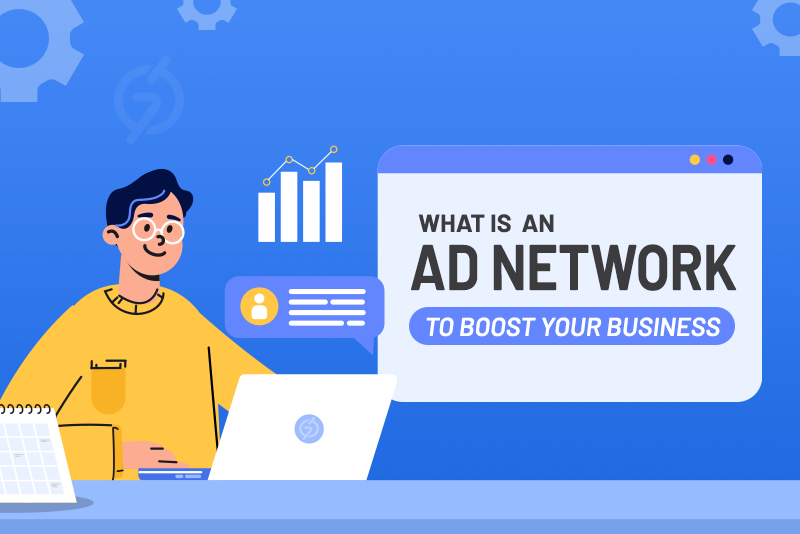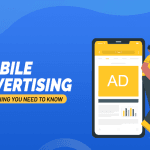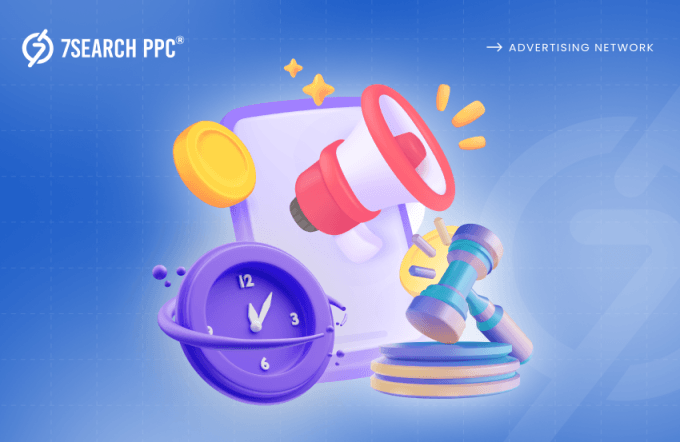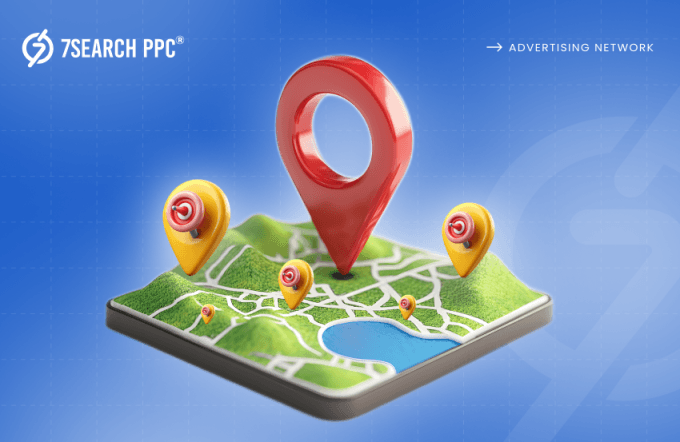If you are reading this blog, you are probably searching for ways to boost your business or earn a significant income through monetization. Are we right? It might be, yes! If you look at the scenario, then you will find that advertising and monetization are two different things, but do you know that there is one solution that can bring both together to help them earn more money easily? That matchmaker we called an ad network.
It allows advertisers to promote their offerings in front of their desired audience and publishers to monetize their content by providing ad space to relevant advertisers. It streamlines the process of finding the right advertising partner with genuine traffic, saving businesses a lot of time. But does it save publishers time? The answer is yes. Suppose you are a publisher with a popular website consistently generating engaging content that attracts a substantial audience. Naturally, you want to monetize this traffic through display ads. Initially, you might do direct sales by negotiating with individual advertisers to place their ads on your site.
The answer is yes. Suppose you are a publisher with a popular website consistently generating engaging content that attracts a substantial audience. Naturally, you want to monetize this traffic through display ads. Initially, you might do direct sales by negotiating with individual advertisers to place their ads on your site.
However, this approach carries risk; not all of your advertising space may be sold, leaving some inventory unused— a situation known as remnant inventory. This is where the advertising network steps in and helps you sell all your inventory in an eye-blinking time.
In this blog, you will find everything related to ad networks that clear all your doubts and help you understand how they effortlessly boost business for advertisers and revenue for publishers.
Ad Network: The Matchmakers of the Digital Advertising World
It is essential to know past history before we jump into its real meaning because it can help us understand the root of the need. In earlier times, it was not easy to promote the offerings and find the right ad platform due to a lack of advanced technology and limited reach to potential customers.
Somehow, advertisers find the ad space, but negotiations and heavy paperwork often spoil their advertising efforts. Meanwhile, publishers struggle to fill their ad inventory and generate revenue. An ad network emerged as a much-needed solution in the digital advertising era.

It solves this issue by connecting advertisers with a larger group of publishers. Advertising networks provide advanced targeting options, making it easier to place ads effectively and helping advertisers reach a broader audience. This also ensures publishers receive a steady flow of ad revenue.
Overall, it offers a common platform for advertisers and publishers to attain their advertising objectives; that’s why we call it a perfect matchmaker.
The Evolution of Ad Networks: A Reformation
Advertising networks have significantly progressed since they started in the mid-1990s, during the early days of the Internet. Here is a quick overview of how they’ve evolved over time:
Pre-Automation Era (1990s):
- Imagine a time before automation. Oh! Some of you were not born in that period! Don’t worry; we will take you back to those days. In the early days of online advertising, selling ad space was a manual process.
- Ad servers started in 1995 to handle ad delivery, but their targeting options were limited at first.
- Around 1996, ad networks emerged as middlemen. They purchased ad space in large quantities from publishers (website owners) and sold it to advertisers, making it simpler to reach a broader audience.
The Era of Optimization (2000s):
- Significant innovation in advertising pricing models occurred during the early 2000s. Google AdWords, now known as Google Ads, debuted in 2000 and introduced a cost-per-click (CPC) option alongside the cost-per-thousand-impressions (CPM) model.
- During that period, Google AdSense transformed how publishers earned revenue online by introducing contextual advertising. This innovation involved placing ads on web pages based on their content.
- By the mid-2000s, ad exchanges became prominent, establishing a live marketplace where publishers could sell their ad inventory through auctions.
- This period also saw the rise of Demand-Side Platforms (DSPs) and Supply-Side Platforms (SSPs). DSPs helped advertisers manage bids across multiple ad exchanges, while SSPs allowed publishers to control their ad inventory and set pricing floors.
The Programmatic Era (2010s-Present):
- The advent of real-time bidding (RTB) between 2009 and 2011 marked the beginning of programmatic advertising. Through RTB, ad spaces are purchased and sold in real-time via automated auctions.
- Ad networks have adjusted to this new environment. Some focus on specific areas like video or mobile ads, while others provide a wide range of advertising options.
- Nowadays, many ad networks use programmatic techniques such as private marketplaces and preferred deals. These methods offer specific advertisers access to targeted ad placements under special terms.
The tale of ad networks is one of continuous innovation and adaptation. As digital advertising changes over time, they will probably keep discovering new ways to link advertisers with publishers and vice versa.
A Look at Different Advertising Network Types
Advertising networks can be broadly categorized into several types based on their functionality, target audience, and the way they deliver ads. Here are some common types:
Vertical Ad Network
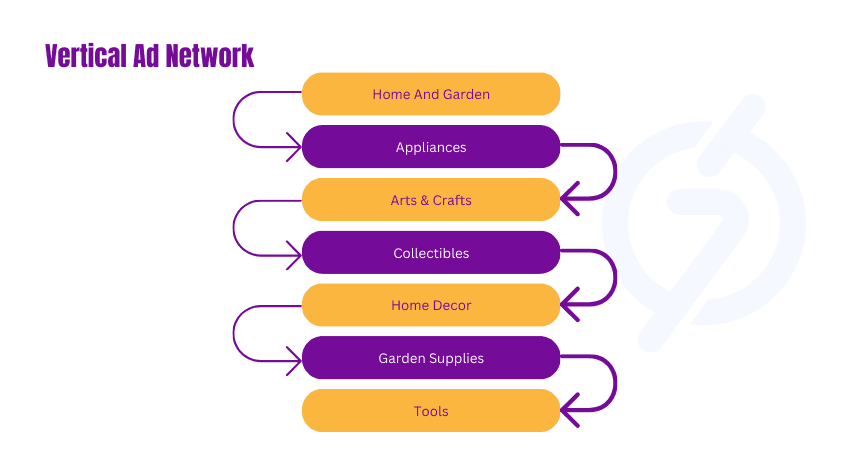
This advertising network specializes in connecting advertisers with a particular audience. They focus on a specific industry or niche, like:
- iGaming
- E-commerce
- Finance
This allows advertisers to target their ads very precisely, reaching users who are highly likely to be interested in their products or services. However, the overall reach of these ad networks might be smaller if you compare them with horizontal ones.
Horizontal Ad Network
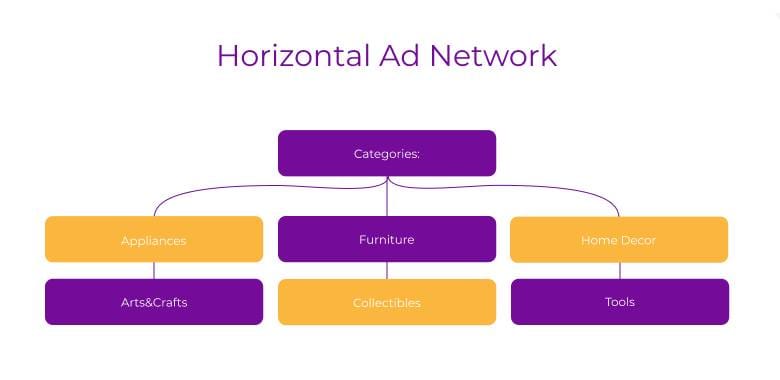
In contrast to vertical ad networks, horizontal advertising networks cast a wider net (reach a broader audience). They work across a broad range of websites and apps, encompassing various industries and topics. This offers advertisers a larger potential audience but with less specific targeting capabilities. It’s a good option for brand awareness campaigns where reaching a broad base of users is the goal.
Premium Ad Network
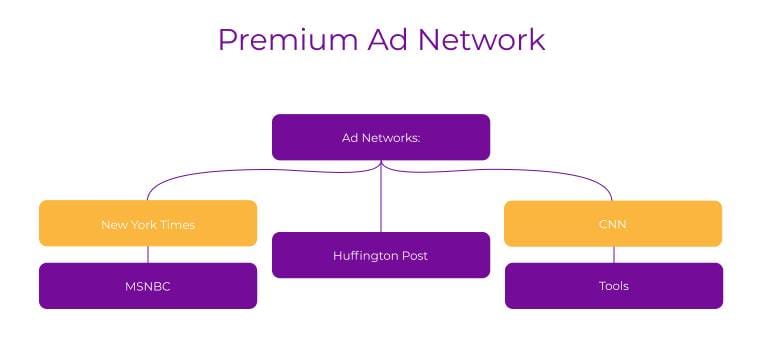
These networks select high-quality ad placements from websites and apps that have established reputations and large audiences. They often have strict criteria for publishers to join because they offer only premium audiences. Advertisers can expect better traffic quality and potentially higher conversion rates, but they may need to pay more for these placements.
Inventory-Specific Ad Network
As the name suggests, these networks specialize in a particular ad inventory. For instance, a network might focus solely on:
- Video ads
- Mobile ads
- Native Advertising
This allows advertisers to tailor their creative content to a specific format for optimal impact.
Targeted Ad Network
These networks work on effective ad targeting by using advanced technology to deliver ads to users according to a wide range of factors, such as:
- Demographics
- Browsing Behavior
- Interests
- Purchase History
This ensures highly precise ad targeting, which helps advertisers optimize their return on ad spend (ROAS) effectively.
How Does an Ad Network Operate?
Now, we understand that an advertising network is essentially an intermediary that bridges the gap between advertisers and publishers in the digital advertising world. Here is a breakdown of how it works:
Aggregation of Publishers
Ad networks start by gathering a large number of publishers who have ad space available on their websites. These publishers register with the ad network and provide details about their available inventory.
Campaign Creation by Advertisers
Advertisers use the ad network’s platform to create their ad campaigns. This involves setting a budget, defining the target audience, and specifying other campaign parameters to ensure the ads reach only the ideal audience.
Integration of Ad Tags by Publishers
Publishers implement ad tags provided by the ad network on their websites. These tags enable the advertising network to dynamically serve ads on the publisher’s site based on the criteria set by the advertisers.
Ad Matching and Serving
The ad network matches the advertiser’s campaign with the appropriate publisher inventory. Once a match is made, the advertising network delivers the ad to the publisher’s site.
Performance Tracking and Management
After the ad is live, advertisers can monitor and manage their campaign’s performance through the ad network platform. This includes tracking metrics such as impressions, clicks, and conversions to optimize the campaign. Advertising networks also permit publishers to see their total earnings and the performance of the ads displayed on their sites.
(These steps outline how an ad network generally works, though the specifics can vary with technological advancements.)
How do Ad Networks Benefit Advertisers and Publishers?
Advertising networks are vital in the online advertising ecosystem because they connect advertisers who want to promote their offerings with publishers who want to earn money from their websites. Here is how ad networks benefit both advertisers and publishers:

For Advertisers:
- Wider Reach- Advertising networks provide access to a vast pool of websites and apps, which helps them target a broader audience. This type of benefit they can’t get through individual publisher deals.
- Cost-Effective Advertising- Advertising networks help advertisers to save their advertising costs effectively. They allow them flexibility and allow them to get full control over their campaigns and budgets.
- Campaign Management and Optimization- Ad networks offer user-friendly dashboards for managing campaigns, tracking performance metrics like impressions and conversions, and adjusting targeting or creatives in real-time.
For Publishers:
- Monetization of Unsold Inventory- Publishers don’t always sell out all their ad space successfully, and this is one of the major problems. Ad networks help publishers fill this “remnant inventory” with relevant ads. It helps in generating additional income without needing to find individual buyers.
- Simplified Ad Management- Instead of managing numerous advertisers and their running online ads, publishers can handle everything through the ad network’s platform. This saves their time and resources, allowing them to focus on creating quality content.
- On-Time Payouts- Ad networks offer on-time payouts to ensure publishers receive their earned revenue promptly. This consistent and predictable income stream helps publishers manage their cash flow effectively.
How to Enhance Your Business Using an Ad Network
Using an ad network can really help grow your business. Here’s how you can optimize it for maximum impact:
Choose the Right Ad Network
The first step is to select the right ad network, which is very important for your advertising efforts. Consider factors such as:
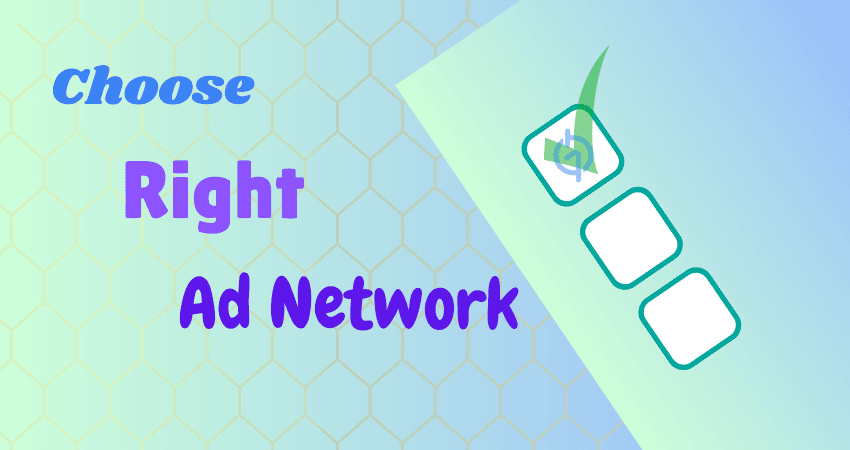
- Audience Reach: Does the network reach your ideal audience?
- Ad Formats: Does it offer the types of ads that work best for your business? (e.g.,. Text, Banner, Native)
- Pricing Models: Does the network offer pricing models that suit your budget (e.g., CPC, CPM, CPA)?
- Reputation and Reliability: Are other businesses satisfied with this network’s performance?
Define Your Advertising Goals
Clearly state what you want to achieve with your ad campaign. Objectives could include:
- Increasing brand awareness
- Driving traffic to your website
- Generating leads or sales
- Promoting a specific product or service
Target Your Audience
Effective targeting is crucial for ad success. Most ad networks offer various targeting options, such as:
- Demographics: Age, gender, income, etc.
- Geography: Specific locations or regions
- Interests and Behaviors: Based on users’ online activities and interests
- Retargeting: Target users who have previously shown interest in your website or ads
Create Engaging Ad Content
Your ads need to capture attention and drive action. Focus on:
- Strong Visuals: Use high-quality images or videos
- Clear Messaging: Explain and communicate your benefits clearly and simply.
- Call to Action (CTA): Encourage users to take the desired action (e.g., “Shop Now,” “Learn More”)
Set a Budget and Bidding Strategy
Determine how much you are willing and decided to spend on your ad campaign. Choose a bidding strategy that perfectly matches your advertising goals, such as:
- Cost-Per-Click (CPC): Pay each time someone clicks on your online ad.
- Cost-Per-Thousand Impressions (CPM): Pay for every 1,000 times your online ad is shown.
- Cost-Per-Acquisition (CPA): Pay when someone takes a specific action, like making a purchase.
Monitor and Optimize Ad Campaigns
Regularly check how your online ads are doing and make changes to get better results. Key metrics to track include:
- Click-Through Rate (CTR)
- Conversion Rate
- Cost Per Conversion
- Return on Ad Spend (ROAS)
Experiment and Adapt
Conduct A/B tests to evaluate various ad designs, targeting options, and strategies. Use the results to improve your campaigns over time.
By following these steps, you can successfully use ad networks to grow your business, reach your target audience, and meet your marketing goals.
Conclusion
Ad networks are beneficial platforms that streamline the process of online advertising for both advertisers and publishers. Advertisers can use ad networks to reach a wider target audience, reduce advertising costs, and optimize their ad campaigns. Publishers can benefit from advertising networks by monetizing unsold ad inventory, simplifying ad management, and receiving on-time payments. If you are looking to boost your business or website’s revenue, consider using an ad network to achieve your goals.
Frequently Asked Questions (FAQs)
What is an advertising network?
Ans. It is a bridge that connects advertisers with publishers in the digital advertising world. It offers advertising and monetization services in the digital advertising world.
How do advertising networks benefit advertisers?
Ans. They provide a wider reach, cost-effective advertising, and easy campaign management and optimization to advertisers.
How do advertising networks benefit publishers?
Ans. They help monetize unsold ad space, simplify ad management, and ensure timely payouts.
What is programmatic advertising?
Ans. Programmatic advertising uses automated real-time bidding to buy and sell ad spaces, enhancing ad targeting and efficiency.
How much money can publishers make with advertising networks?
Ans. The publisher’s earnings will depend on factors like website traffic, ad format, and niche. If you want to earn a significant income, then you must focus on the selection of the advertising network and the content quality to attract and retain visitors.


